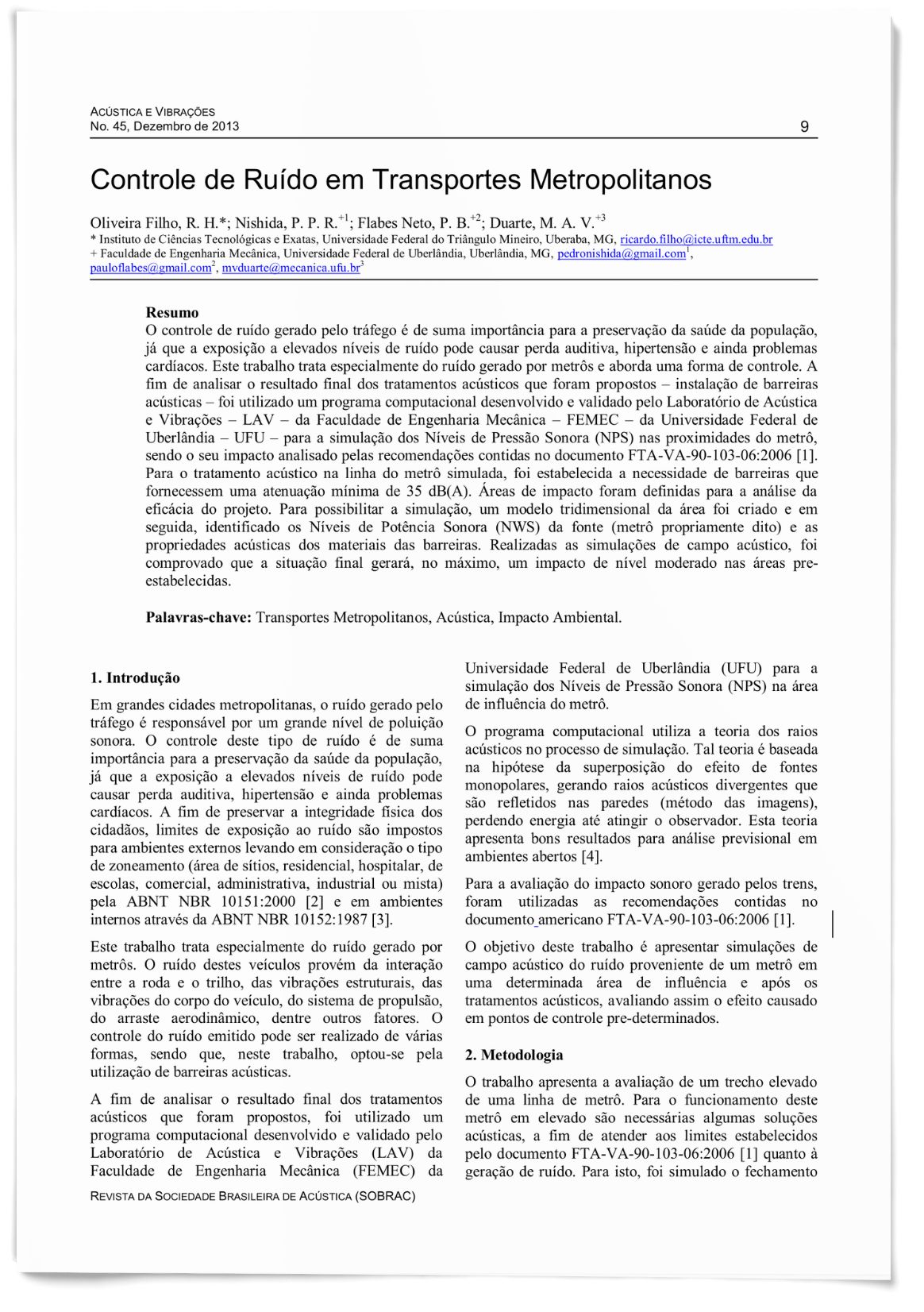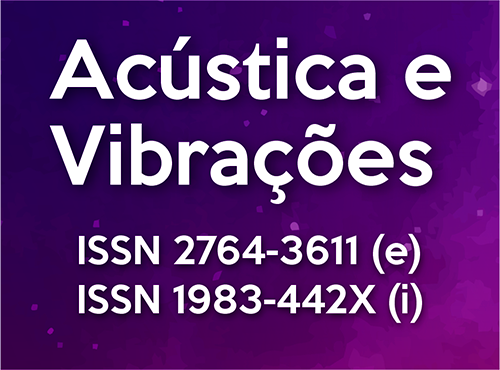Noise Control in Metropolitan Transport
DOI:
https://doi.org/10.55753/aev.v28e45.146Keywords:
Metropolitan Transport, Acoustics, Environmental ImpactAbstract
The control of noise generated by traffic is of paramount importance for the preservation of the population's health since exposure to high levels of noise can cause hearing loss, hypertension, and even heart problems. This work deals especially with the noise generated by subways and addresses a form of control. In order to analyze the final result of the acoustic treatments that were proposed - installation of acoustic barriers - a computer program developed and validated by the Laboratory of Acoustics and Vibrations - LAV - of the Faculty of Mechanical Engineering - FEMEC - of the Federal University of Uberlândia - was used. UFU – for the simulation of Sound Pressure Levels (SPL) in the vicinity of the subway, its impact is analyzed by the recommendations contained in the document FTA-VA-90-103-06:2006 [1]. For the acoustic treatment in the simulated subway line, the need for barriers that provide a minimum attenuation of 35 dB(A) was established. Impact areas were defined for the analysis of project effectiveness. To enable the simulation, a three-dimensional model of the area was created and then the Sound Power Levels (NWS) of the source (metro itself) and the acoustic properties of the barrier materials were identified. After performing the acoustic field simulations, it was proved that the final situation will generate, at most, a moderate level impact in the pre-established areas.
References
FTA-VA-90-103-06:2006: Transit Noise and Vibration Impact Assessment, Federal Transit Administration, Department of transportation – United States of America.
ABNT NBR 10151:2000: Acústica - Avaliação do ruído em áreas habitadas, visando o conforto da comunidade – Procedimento.
ABNT NBR 10152:1987: Níveis de ruído para conforto acústico.
Oliveira Filho, R. H.: Uma metodologia para a avaliação virtual da dose de exposição ao ruído no ambiente de trabalho. 2011. 166 p. Tese de Doutorado - Faculdade de Engenharia Mecânica, Universidade Federal de Uberlândia, Uberlândia, 2011.
IMA6TR-05110-AEATUK01 (10/01/2005) : Measured railway noise source data in the public domain or via the Imagine Project, AEA Technology Rail.

Published
How to Cite
Issue
Section
License
Copyright (c) 2013 Acústica e Vibrações

This work is licensed under a Creative Commons Attribution-NonCommercial-ShareAlike 4.0 International License.




